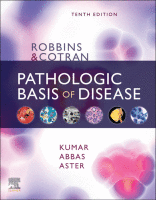Physical Address
304 North Cardinal St.
Dorchester Center, MA 02124

Although this chapter comes at the end of the book, it is not an afterthought. Vision is a major quality-of-life issue. Before the public awareness of acquired immunodeficiency syndrome (AIDS) and Alzheimer disease, the most feared disease among Americans was…

The principal functional unit of the central nervous system (CNS) is the neuron . Neurons of different types and in different locations have distinct properties, including diverse functional roles, patterns of synaptic connections, neurotransmitters used, and metabolic requirements, which vary…

Neuromuscular diseases are a complex group of disorders that typically present with weakness, muscle pain, or sensory deficits and may be inherited or acquired. They can be grouped according to anatomy, disease course, and pathogenesis. Physicians keep all these characteristics…

Bone Basic Structure and Function of Bone The adult human skeleton is composed of 206 bones that account for ~12% of body weight. Bone functions include mechanical support, force transmission, internal organ protection, and mineral homeostasis, and it also serves…

The Skin: More Than a Mechanical Barrier More than a century and a half ago, the noted pathologist Rudolph Virchow described the skin as a mere protective covering for more delicate and functionally sophisticated internal viscera. Subsequently, the skin was…

The endocrine system consists of a highly integrated and widely distributed group of organs, called glands, that orchestrate a state of metabolic equilibrium among the various organs of the body. Signaling by secreted molecules can be classified into three types—autocrine,…

The breast is distinguished from other organs by three important characteristics. First, its major function is to provide for the nutritional support and survival of another individual, the infant. Second, it undergoes dynamic structural changes throughout life: expansion of the…

A brief review of the development and anatomy of the female genital tract is fundamental to understanding the diseases that affect this complex organ system. Normal development of the female genital tract proceeds through a series of tightly choreographed events…

The Lower Urinary Tract The renal pelves, ureters, urinary bladder, and urethra (except the terminal portion) are lined by a special form of transitional epithelium called urothelium . Urothelium is composed of five to six layers of cells with oval…

What is a human but an ingenious machine designed to turn, with “infinite artfulness, the red wine of Shiraz into urine?” So said the storyteller in Isak Dinesen's Seven Gothic Tales . More accurately but less poetically, human kidneys serve…